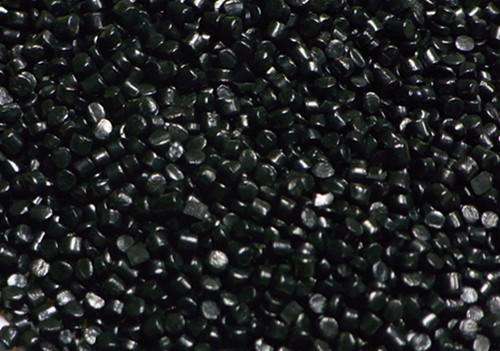Four major production methods for black masterbatch
More and more manufacturers are using black masterbatch coloring now, because black masterbatch coloring has the advantages of being non-toxic, odorless, smokeless, with a smooth and glossy product surface, stable solid color, good toughness, and no color spots or lines. It not only reduces costs, saves additives, but also reduces pollution in factory premises. Many people want to know how black masterbatch is produced. Now we share the four major production methods for black masterbatch:
1、 Ink method: literally, it refers to the production method of using ink paste in black masterbatch production, which involves three rolls of grinding and coating a low molecular protective layer on the surface of the pigment. After grinding, the fine color paste is mixed with the carrier resin, and then plasticized by a two roll plastic mixer (also known as a double roll open mill), and granulated by a single screw or double screw extruder.

2、 Rinsing method: It is the process of sanding pigments, water, and dispersants to reduce the particle size of pigments to less than 1 μ m. And through phase transfer method, the pigment is transferred into the oil phase, and then dried to obtain black masterbatch. Organic solvents and corresponding solvent recovery equipment are required for phase conversion.
3、 Pinching method: It is the process of mixing pigments and oil-based carriers, utilizing the oleophilic properties of pigments, and then kneading them to wash them from the water phase into the oil phase. Together, the surface of the pigment is coated by an oily carrier to ensure stable dispersion and prevent pigment aggregation.
4、 Metal soap method: It is the process of grinding pigments to achieve a particle size of 1 μ At a certain temperature, the surface layer of each pigment particle is uniformly wetted by the soap solution, forming a layer of saponification solution. When the metal salt solution participates, it chemically reacts with the saponification layer on the surface of the pigment to form a protective layer of metal soap (magnesium stearate). This ensures that the finely ground pigment particles do not cause flocculation and protect a certain degree of fineness.
Different black masterbatch production methods have different advantages, and it is necessary to choose the appropriate method based on the characteristics of one's own enterprise.
Article source: Taishan conductive mica particles
-
04-11
Taishan conductive PP masterbatch: How to use defoaming masterbatch?
Defoaming masterbatch is suitable for enterprises that use PE and PP recycled plastics for product production. The trace amount of moisture contained in raw materials has a very serious impact on the
-
11-13
Characteristics and uses of conductive masterbatch plastics
Characteristics and uses of conductive masterbatch plastics1、 Characteristics of conductive masterbatch plastics:① Most plastics are lightweight, chemically stable, and will not rust;② Good impact res
-
10-13
What is PP talc powder masterbatch
What is the masterbatch of PP talc powder?PP talc powder masterbatch is a plastic modified filler, mainly composed of talc powder, which is a particle mixed with polymers or other carriers. It is main
-
08-09
Taishan Conductive Cloud Masterbatch Manufacturer Tells You Why to Use Conductive and Anti static Engineering Plastics
1. The fundamental physical properties of static electricity are:(1) Attracting or excluding;(2) There is a potential difference with the earth;(3) Discharge current will occur.These three characteris

